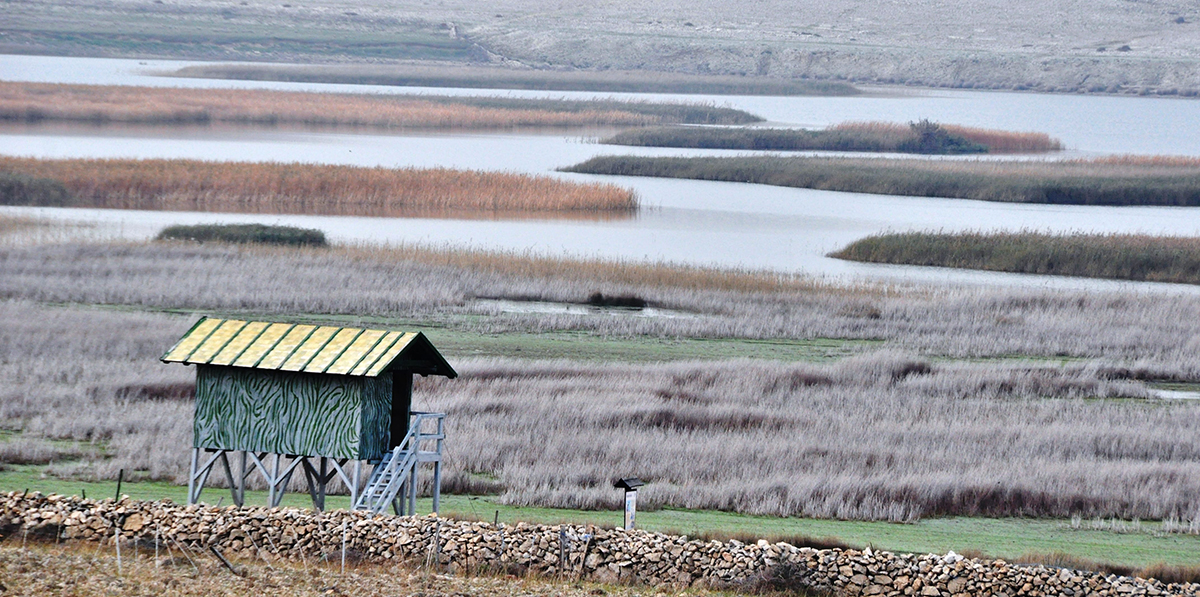
The ornithological reserve Veliko blato, is a shelter for a wide variety of marsh birds, especially during the period of nesting, migration and hibernation. The length of the marsh habitat is about 2 km, with an average width of app. 1.2 km. Such a preserved marsh territory is very rare nowadays, especially because of the increasing vulnerability of the marsh ornithofauna and the disappearance of the marsh biothope throughout Europe. Among all types of habitats in Europe, marsh habitats are definitely the richest and most various in bird life. The reserve Veliko blato is an important location for bird-watching and related activities, because there are exceptional facilities for this kind of recreational tourism which is based on sight-seeing round trips, bird-watching and photography. The reservation has a watch tower and an info-board Experts have so far documented 143 bird varieties on the locality, compiled a bird check-list, and marked the most convenient periods within each season for bird-watchers, as well as varieties of birds which can be seen during a particular period. We plan to issue a brochure on the birds of the Veliko blato reserve.
Reeds
The northern part is surrounded by reeds (Phragmites communis), which are especially well-developed in the southeastern part of the reserve. Beside reeds, there are some varieties of sedges (Carex sp.), rushes (Juncus acutus, J. conglomeratus, J. maritimus) and other marsh varieties (Scirpus sp., Sparganium erectum, etc.).
Karst
The edge of the depression is covered by meadows which are sometimes flooded in the spring and fall. The southern part of the reserve is surrounded by karst terrain sporadically covered with karst-terrain plant varieties (Salvia officinalis, Helychrisum italicum, Euphorbia spinosa, Inula candida, Stachis salviaefolius, etc.).
Birds
The following birds can often be spotted here: black coot (Fulica atra), little grebe (Tachybatus ruficollis), great crested grebe (Podiceps cristatus), grey heron (Ardea cinerea), white heron(Egretta alba), bittern (Botaurus stellaris), glossy ibis (Plegadis falcinellus), ferruginous duck (Aythya nyroca), and common spoonbill (Platalea leucorodia).
Gadwall, calandra lark ….
What makes the reserve so special is the fact that it is the nesting place of the gadwall (Anas strepera), Montagu’s harrier (Circus pygargus), and calandra lark (Melanocorypha calandra), all three endangered Europe-wide, whereas in Croatia they are very rare nesting birds.
Malo blato, Kolansko blato
Apart from Veliko blato, on the island of Pag there are two more marsh areas: Malo blato in the vicinity of Veliko blato, and Kolansko blato in the Kolan municipality. All three localities have obtained the status of ornithological reserves.
Tickets ….
for sightseeing in Veliko blato are sold in the Tourist board Povljana. The reserve is a protected area. Enjoy the beauty of the reserve and do not leave behind anything that might corrupt it.
